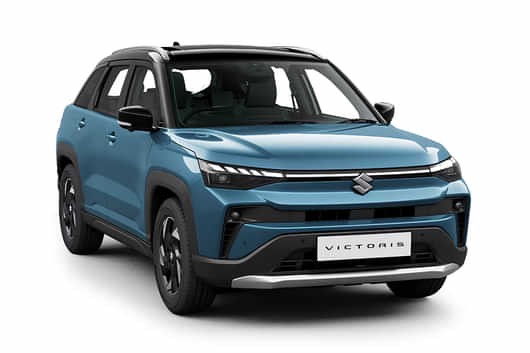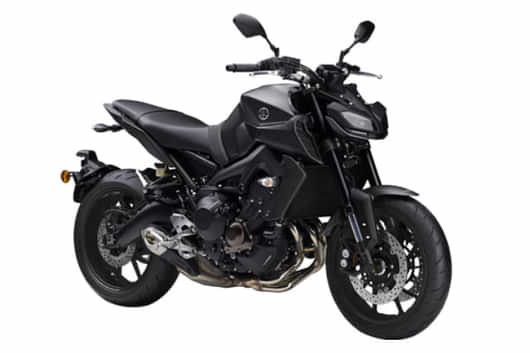
KEY HIGHLIGHTS
- Bharat NCAP 2.0 brings a stricter 100-point, five-pillar safety rating system.
- ESC and curtain airbags become mandatory for star ratings.
- Five-star requirements tighten to 80 points from 2029.
India's vehicle safety ecosystem is gearing up for its biggest shift yet. The Ministry of Road Transport and Highways (MoRTH) has released draft regulations for Bharat NCAP 2.0, outlining a far more stringent, wide-ranging crash-test programme that will come into effect in late 2027. Unlike the current protocol, which focuses largely on adult and child occupant protection, the upcoming version expands testing, redefines scoring, and places greater emphasis on technologies that help prevent accidents in the first place. With India steadily emerging as one of the world's largest automotive markets, the updated framework aims to push manufacturers toward safer structures, smarter driver-assistance systems, and improved protection for both occupants and vulnerable road users. Read on to find our more details on the topic, but before that, make sure to join the 91wheels WhatsApp Community, specifically curated for petrolheads like us to keep up with the latest news and automotive updates.
Also Read- Maruti Brezza Facelift Spied On Test Again; Front & Side Profiles Papped!
Bharat NCAP 2.0: A New Five-Pillar Safety Philosophy

Bharat NCAP 2.0 shifts from a two-category scoring system to a holistic 100-point rating divided across five pillars, mirroring modern test programmes like Euro NCAP and ASEAN NCAP. The proposed pillars include:
- Crash Protection (55%)
- Vulnerable Road User Protection (20%)
- Safe Driving (10%)
- Accident Avoidance (10%)
- Post-Crash Safety (5%)
This expanded outlook ensures that a vehicle's rating no longer depends solely on how well it performs during a crash, but also on its ability to avoid one and minimise injury to pedestrians and two-wheeler riders. From 2027 to 2029, a five-star rating will require at least 70 points, with the threshold rising to 80 points from 2029 onward, pushing carmakers to keep improving their safety performance.
Mandatory Features For A Star Rating

To qualify for a Bharat NCAP 2.0 star rating, manufacturers will need to equip their cars with a minimum set of safety features.
Two features become non-negotiable:
- Electronic Stability Control (ESC)
- Curtain Airbags (Side Head Protection)
Autonomous Emergency Braking (AEB) remains optional, for now, but contributes heavily to scoring under accident avoidance. Importantly, vehicles with side-facing seats will not be eligible for a rating, aligning India's testing standards with global best practices. ISOFIX mounts, seatbelt reminders with occupant detection, blind-spot monitoring, lane departure warnings, and fatigue alerts also feed into the broader scoring system.
Five Crash Tests For More Realistic Evaluation

The current Bharat NCAP protocol includes only two crash tests, frontal offset and side impact. Bharat NCAP 2.0 expands this to five distinct crash tests, all conducted on each model's base variant:
- 64 km/h offset frontal impact
- 50 km/h full-width frontal impact
- 50 km/h mobile deformable barrier side impact
- 32 km/h oblique pole test
- 50 km/h mobile rigid rear impact
This expanded suite allows the rating to reflect a wider range of real-world crash scenarios, including rear-end collisions and narrow-object impacts. Tests will incorporate male and female adult dummies as well as child dummies, with individual scoring for each category.
Bharat NCAP 2.0: Protection for Pedestrians & Two-Wheeler Riders
For the first time, Bharat NCAP introduces a separate Vulnerable Road User Protection score. Automakers will now need to design Impact-absorbing bumpers, Softer bonnets, safer windshields, and structures that reduce head, pelvis, and leg injuries. Given India's high percentage of pedestrian and two-wheeler fatalities, this addition is one of the most significant changes in the new protocol.
Also Read- Mahindra XUV700 Facelift Interiors Spied; Major Updates In Sight
Post-Crash Safety: A New Scoring Category
Though weighted at 5%, the Post-Crash Safety pillar introduces several important standards, including:
- Measures to reduce electrical and fire hazards
- Ease of occupant rescue
- Automatic SOS alerts to emergency services
- Better cabin access for first responders
This brings India's evaluation criteria in line with international best practices for emergency response and crash survivability. The draft is currently open for industry feedback, and Bharat NCAP 2.0 will officially replace the existing protocol in October 2027, after the current guidelines expire on September 30, 2027. Manufacturers will be given time to adapt their platforms and safety technologies to the stricter requirements.
Verdict
Bharat NCAP 2.0 is poised to be the most impactful safety reform India has ever introduced for passenger vehicles. By evaluating cars across crash protection, active safety tech, vulnerable road user safety, and post-crash performance, the new protocol forces manufacturers to move far beyond structural strength alone. For buyers, the revised star ratings will offer a clearer, more dependable indicator of real-world safety. And for the industry, the tougher scoring and mandatory features will accelerate the shift toward advanced driver-assist systems and robust crash protection.





















